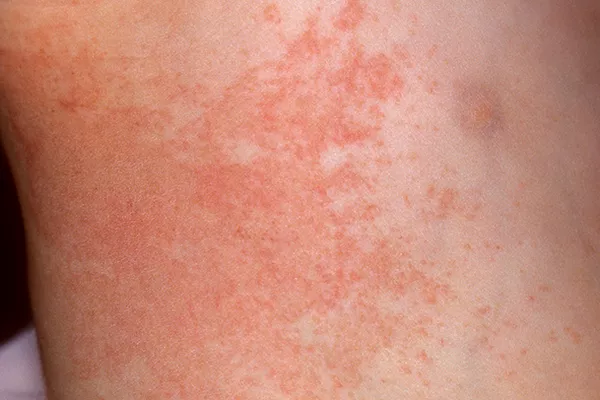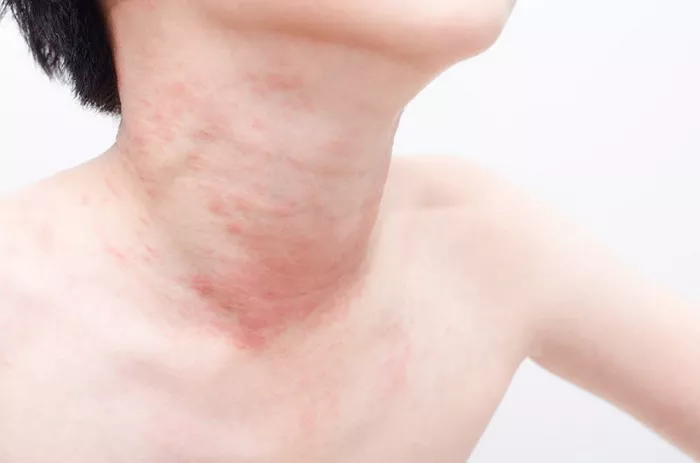Hives, medically known as urticaria, can be a bothersome and sometimes mysterious skin reaction. For some individuals, the appearance of hives seems closely tied to warmer temperatures. The relationship between heat and hives is a complex one, involving various physiological and environmental factors. Understanding why hives occur in response to heat can empower individuals to manage this condition more effectively. Let’s delve into the intricacies of this phenomenon.
What Are Hives?
Hives are raised, red or white welts on the skin that often itch and can vary in size and shape. They occur when certain cells release histamine and other chemicals into the skin in response to an allergen or trigger. This process causes blood vessels to leak fluid, leading to the characteristic swelling and itching associated with hives. Hives can appear suddenly and typically disappear within hours or days.
The Heat-Hive Connection
The link between heat and hives can be multifaceted. While not everyone experiences hives in response to heat, for those who do, several mechanisms may be at play:
1. Heat as a Trigger: Heat itself can act as a trigger for hives in susceptible individuals. When the body temperature rises, especially during hot weather or physical exertion, it can lead to the release of histamine and other chemicals that cause hives.
2. Exercise-Induced Urticaria: Some individuals experience a specific type of hives known as exercise-induced urticaria. This condition is characterized by hives and other allergic symptoms triggered by physical activity, particularly in hot conditions.
3. Cholinergic Urticaria: Heat can stimulate sweat production, and in some cases, this can trigger a type of hives called cholinergic urticaria. This condition is believed to be caused by an overreaction of sweat glands to heat, leading to the release of histamine.
Heat and Histamine Release
Histamine is a key player in the development of hives. It is released by certain cells in response to triggers like heat, allergens, or exercise. When histamine is released into the skin, it causes blood vessels to dilate and become more permeable, leading to the characteristic redness, swelling, and itching of hives.
In hot weather, the body’s temperature regulation mechanisms may be stressed, leading to increased histamine release. This can be exacerbated in individuals who already have a tendency towards allergic reactions or who have conditions like cholinergic urticaria.
Other Factors Contributing to Heat-Induced Hives
Beyond direct heat exposure, several other factors may contribute to the development of hives in hot conditions:
1. Sweat Allergy: Although rare, some individuals may be allergic to their own sweat. This condition, known as sweat allergy or cholinergic urticaria, can manifest as hives during or after sweating.
2. Sun Exposure: For some people, sun exposure itself can trigger hives. This can be due to a condition called solar urticaria, where the skin reacts to sunlight with hives and itching.
3. Increased Blood Flow: In hot weather, blood vessels near the skin’s surface dilate to release heat, which can make hives more prominent and visible.
4. Underlying Conditions: Certain underlying medical conditions, such as autoimmune disorders or thyroid dysfunction, can also increase the likelihood of experiencing hives in response to heat.
Managing Heat-Induced Hives
If you frequently experience hives in hot weather, several strategies can help manage and minimize symptoms:
- Stay Cool: Avoid overheating by staying in shaded or air-conditioned areas during hot weather. Wear loose, breathable clothing.
- Avoid Triggers: Identify and avoid specific triggers that exacerbate your hives, whether it’s heat, sweat, or sun exposure.
- Medication: Over-the-counter antihistamines can help reduce histamine-related symptoms. Consult with a healthcare professional for appropriate recommendations.
- Hydration: Stay well-hydrated to support your body’s natural cooling mechanisms.
- Allergy Testing: Consider undergoing allergy testing to identify potential triggers and allergens that may be contributing to your hives.
When to Seek Medical Attention
While hives are often harmless and temporary, seek medical attention if:
- Hives are accompanied by difficulty breathing, swelling of the face or throat, or dizziness.
- Hives persist for more than a few days despite home treatment.
- You experience other symptoms alongside hives, such as fever or joint pain.
Conclusion
The relationship between heat and hives is a complex interplay of physiological responses and environmental factors. For individuals prone to heat-induced hives, understanding these mechanisms can be instrumental in managing symptoms effectively. By employing strategies to stay cool and avoid triggers, many individuals can experience relief from heat-related hives and enjoy the warmer months more comfortably. If hives persist or are accompanied by concerning symptoms, consulting with a healthcare provider is recommended to explore potential underlying causes and treatment options.
Related Topics:

























